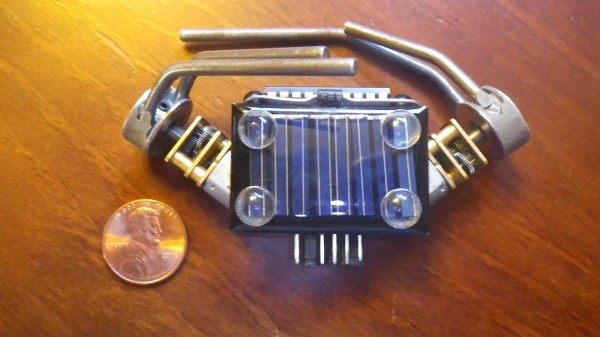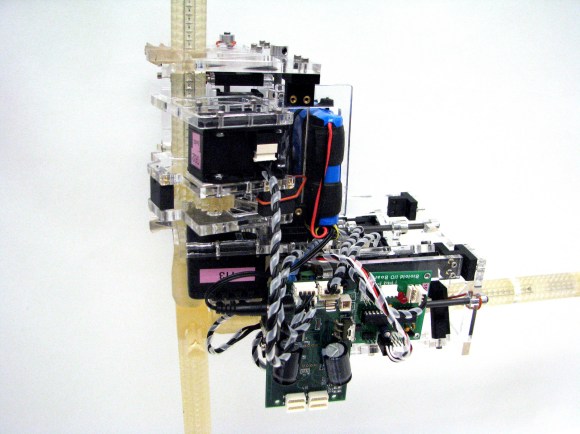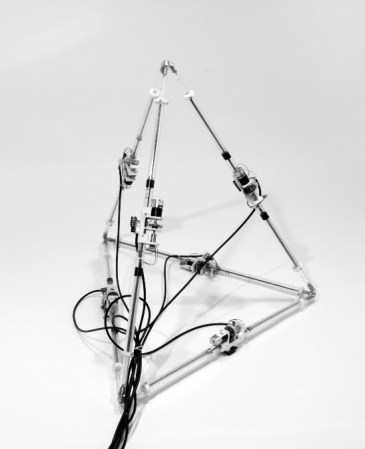
[William Bondin] is working on a rather interesting project, a tetrahedron morphing robot called Morphs (Mobile Reconfigurable Polyhedra).
It is able to move by the extension of each of its telescopic edges, and as it morphs, the centre of gravity shifts, allowing it to roll over. It is far from an efficient way to move, but it is quite entertaining to watch!
The custom two-directional linear actuators were designed to ensure the weight is symmetrically distributed on each axis, and they were able get the current draw down to about 200mA during actuation, which means with a few strategically placed battery cells, it’ll be able to go wireless too. The prototype unit is controlled by a single Arduino, which sends the commands to each motor-encoder couple.
[William] is hoping to develop it into a full scale architectural prototype, and by 2015 hopes to have these interactive robotic structures rolling around public parks. The architectural end goal is to allow for buildings to respond to environmental inputs, like daylight and temperature.
Confused? Check out the video after the break.

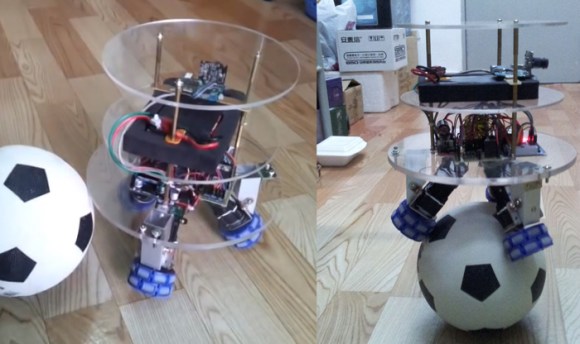
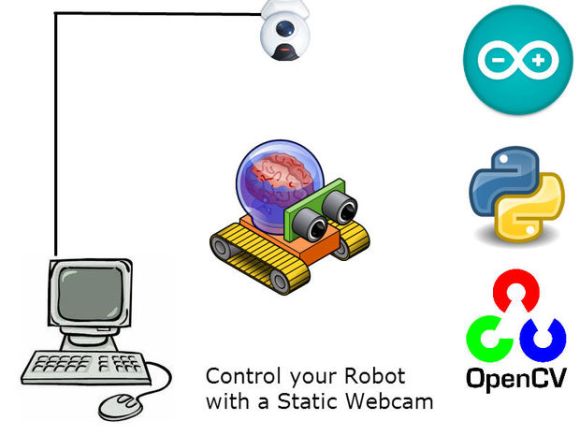
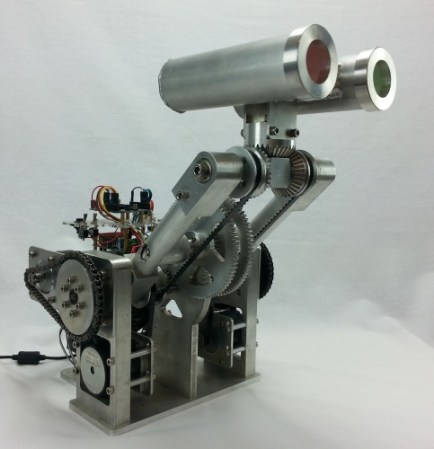
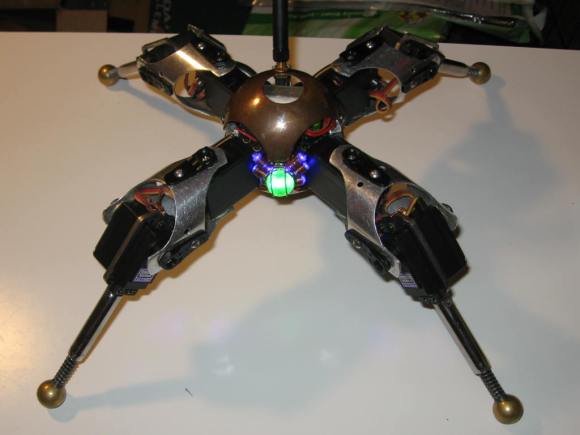 Back at New York MakerFaire 2012, we noticed an amazing little steampunk quadruped robot walking around in the crowd outdoors. The robot was amazingly well executed, and had a unique ability to draw children over with it’s puppy like animations. It turns out this is
Back at New York MakerFaire 2012, we noticed an amazing little steampunk quadruped robot walking around in the crowd outdoors. The robot was amazingly well executed, and had a unique ability to draw children over with it’s puppy like animations. It turns out this is 